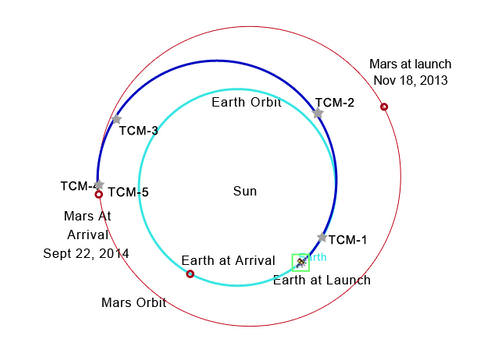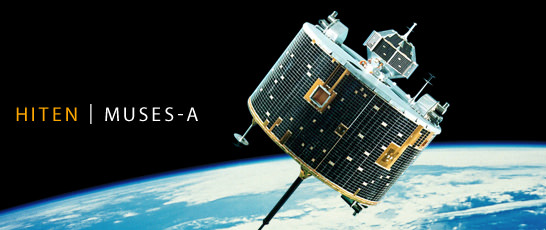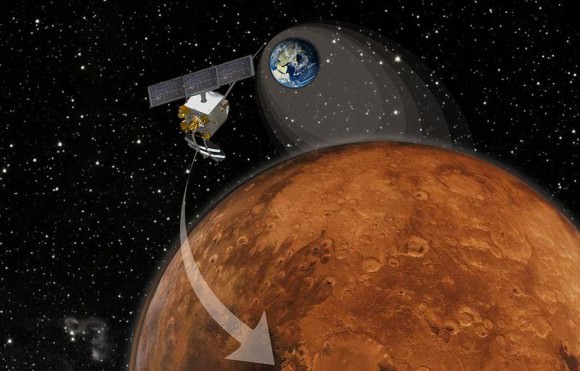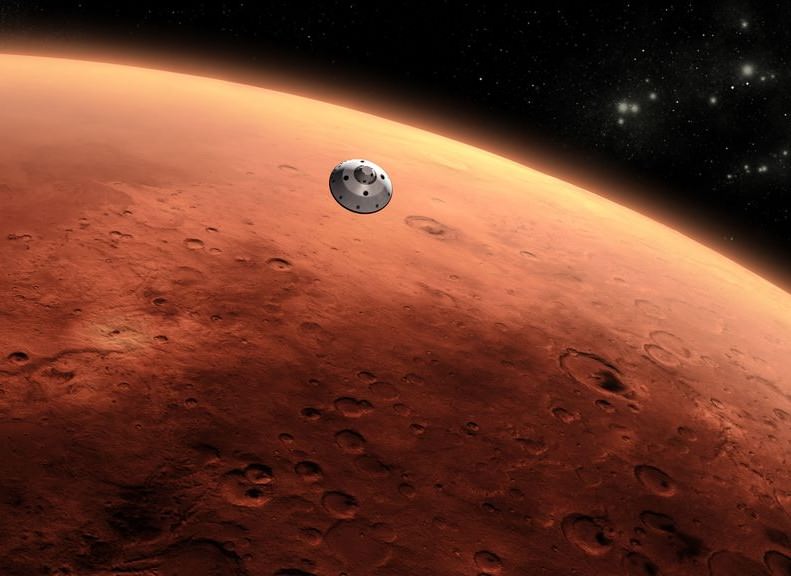When sending spacecraft to Mars, the current, preferred method involves shooting spacecraft towards Mars at full-speed, then performing a braking maneuver once the ship is close enough to slow it down and bring it into orbit.
Known as the “Hohmann Transfer” method, this type of maneuver is known to be effective. But it is also quite expensive and relies very heavily on timing. Hence why a new idea is being proposed which would involve sending the spacecraft out ahead of Mars’ orbital path and then waiting for Mars to come on by and scoop it up.
This is what is known as “Ballistic Capture”, a new technique proposed by Professor Francesco Topputo of the Polytechnic Institute of Milan and Edward Belbruno, a visiting associated researcher at Princeton University and former member of NASA’s Jet Propulsion Laboratory.
In their research paper, which was published in arXiv Astrophysics in late October, they outlined the benefits of this method versus traditional ones. In addition to cutting fuel costs, ballistic capture would also provide some flexibility when it comes to launch windows.

Currently, launches between Earth and Mars are limited to period where the rotation between the two planets is just right. Miss this window, and you have to wait another 26 months for a new one to come along.
At the same time, sending a rocket into space, through the vast gulf that separates Earth’s and Mars’ orbit, and then firing thrusters in the opposite direction to slow down, requires a great deal of fuel. This in turn means that the spacecraft responsible for transporting satellites, rovers, and (one day) astronauts need to be larger and more complicated, and hence more expensive.
As Belbruno told Universe Today via email: “This new class of transfers is very promising for giving a new approach to future Mars missions that should lower cost and risk. This new class of transfers should be applicable to all the planets. This should give all sorts of new possibilities for missions.”
The idea was first proposed by Belbruno while he was working for JPL, where he was trying to come up with numerical models for low-energy trajectories. “I first came up with the idea of ballistic capture in early 1986 when working on a JPL study called LGAS (Lunar Get Away Special),” he said. “This study involved putting a tiny 100 kg solar electric spacecraft in orbit around the Moon that was first ejected from a Get Away Special Canister on the Space Shuttle.”

The test of the LGAS was not a resounding success, as it would be two years before it got to the Moon. But in 1990, when Japan was looking to rescue their failed lunar orbiter, Hiten, he submitted proposals for a ballistic capture attempt that were quickly incorporated into the mission.
“The time of flight for this one was 5 months,” he said. “It was successfully used in 1991 to get Hiten to the Moon.” And since that time, the LGAS design has been used for other lunar missions, including the ESA’s SMART-1 mission in 2004 and NASA’s GRAIL mission in 2011.
But it is in future missions, which involve much greater distances and expenditures of fuel, that Belbruno felt would most benefit from this method. Unfortunately, the idea met with some resistance, as no missions appeared well-suited to the technique.
“Ever since 1991 when Japan’s Hiten used the new ballistic capture transfer to the Moon, it was felt that finding a useful one for Mars was not possible due to Mars much longer distance and its high orbital velocity about the Sun. However, I was able to find one in early 2014 with my colleague Francesco Topputo.”

Granted, there are some drawbacks to the new method. For one, a spacecraft sent out ahead of Mars’ orbital path would take longer to get into orbit than one that slows itself down to establish orbit.
In addition, the Hohmann Transfer method is a time-tested and reliable one. One of the most successful applications of this maneuver took place back in September, when the Mars Orbiter Mission (MOM) made its historic orbit around the Red Planet. This not only constituted the first time an Asian nation reached Mars, it was also the first time that any space agency had achieved a Mars orbit on the first try.
Nevertheless, the possibilities for improvements over the current method of sending craft to Mars has people at NASA excited. As James Green, director of NASA’s Planetary Science Division, said in an interview with Scientific American: “It’s an eye-opener. This [ballistic capture technique] could not only apply here to the robotic end of it but also the human exploration end.”
Don’t be surprised then if upcoming missions to Mars or the outer Solar System are performed with greater flexibility, and on a tighter budget.
Further Reading: arXiv Astrophysics


It is confusing to see this new method contrasted with Hohmann transfer orbit like this. This article implies that the overall transfer method is substantially different, and more fuel efficient than the Hohmann transfer, when this is not the case. The description of the new method “which would involve sending the spacecraft out ahead of Mars’ orbital path and then waiting for Mars to come on by and scoop it up” would equally apply to the Hohmann transfer. Additionally, a Hohmann transfer represents the lowest possible delta-V between two planets. From what I can understand of the article, this method focuses on fine-tuning the approach to cut the capture delta-V into certain high orbits. However the injection burn still basically resembles that of a Hohmann transfer, and from what I can understand, it still doesn’t offer delta-V savings to the surface or low orbit. It looks like a clever way to cut fuel and expand the launch window for high orbits, but not a revolution in how we get to mars.
Hohmann Transfer orbits are *not* the lowest possible energy transfer orbits. There are numerous (almost countless) other transfer orbits that are lower energy. Hohmann orbits are actually one of the higher energy transfer orbits.
Hohmann orbits are one of the lowest energy ***direct*** transfer orbits. This “new” orbit, however, results in about 25% less fuel expended (or a fair bit more payload if that’s the way you want to go), and is a direct transfer orbit as well. It’s a bit slower than a Hohman Transfer Orbit, though.
The reason for this is simple: on a Hohmann transfer orbit you shoot for where the planet is going to be, and then catch up to it. You have to go faster than the planet is in order to catch up to it, so you have to expend fuel to slow down when you get there. Once you slow down enough, you are captured by the planet’s gravity in an elliptical orbit with a low periapsis (perimartian?). You can then circularize and lower your orbit as needed, if you have enough fuel left in reserve. Some probes, like India’s MOM probe, don’t bother with that last step, due to the high fuel requirements. They cannot, however, do as much science from their high, highly elliptical orbits.
The “new” (actually almost 3 decades old, but never applied to Mars before) method is a bit different. Instead of aiming where the planet is going to be, then blasting off faster than the planet to catch up to it (like you do with a direct transfer orbit), you instead aim way ahead of where the planet is going to be, go ever so slightly slower than the planet goes, and wait for it to catch up to you. Because your speed is just slightly slower than that of the planet, you are “sling-shotted” away from the planet. But if you do it *juuuuust* right, you only receive enough of a speed boost to kick you into orbit around the planet. No fuel is expended during approach and capture, unlike a Hohmann Transfer Orbit. You still have to lower and circularize your orbit (which actually takes a bit more fuel due to the wonkier orbit you find yourself in), but you’re still *way* better off than you are with a Hohmann Transfer Orbit.
The downside? It takes a minimum of ~8 months to enter Mars orbit as opposed to 6 with a Hohmann orbit, and you also lose your free-return possibility. But you use 25% less fuel for a given payload, so you can either save money, or launch way more payload for the same amount of money:).
Gopher65: I appreciate your more detailed description of this method, but I have to disagree with your description of the Hohmann transfer: in a standard Hohmann transfer to a planet more distant than the sun, you arrive at the rendezvous point going slower than the target planet, which approaches from behind, just as with the newer approach. The difference, it seems, is in the details of that approach, the Hohmann transfer aiming nearly at the planet and this new approach dallying farther out. However, the benefits seem limited to more distant target orbits, table 2 in the paper seems to confirm this. There is much in this paper that is beyond me, but that’s my reading of it, let me know if you think I’m misinterpreting their conclusions.
Hmmm. Not sure what I was thinking with the Hohmann. Let me think on that for a while.
Couple points though:
1) One of the biggest strengths of a Hohmann Transfer Orbit to Mars is that if you fail to fire thrusters and slow down as you approach the planet, you end up on a “free return” path to Earth. This is great for unpowered (or low power) aborts. However, one of the greatest weaknesses of the Hohmann Transfer Orbit is that you need to fire thrusters to slow down at the planet:P. Not only does this add complexity to the mission (it adds another potential point of failure), but it adds to the fuel reserves needed.
2) The “new” method was actually originally developed for use to go to the moon. For some reason they had difficulty working out the math of how it would work with any other object, so it was never used for anything but low energy Lunar transfers. The reason it’s “new” is that they’ve figured out how to make it work with bodies other than Luna.
The reference to Belbruno and the Hiten mission suggests this is really a kind of Interplanetary Transport Network manoeuvre, see: http://en.wikipedia.org/wiki/Low-energy_transfer.
The idea is hardly revolutionary in concept, though it does contrast with a Hohmann transfer, in being much more fuel efficient but taking a heck of a lot longer to achieve (like years, if not decades, longer). Seems an unlikely option for a manned mission.
It takes about 8 months compared to 6 months for a Mars mission. So still doable, probably.
Thanks – I am grateful for the ‘probably’.
Belbruno’s book “fly me too the moon”(http://press.princeton.edu/titles/8375.html) does an EXCELLENT job, non mathematically, describing the process and the history of his ideas. IIRC It talks about how the moons of Mars got there which always confused me since they can’t do a MOI burn 🙂 I HIGHLY recommend the book.
jb
Thanks for the recommendation
golpher65, your comment, “…you also lose your free-return possibility.” makes the Hohmann Transfer Orbit MUCH more attractive of the two transfer orbits. Say that you are going there and 3/4 the way into the mission a planetary dust storm erupts, ruling out known atmospheric entry and landing options. Do you stay in orbit around Mars waiting for it to clear? How long can you wait before the mission is compromised by volatiles consumption?